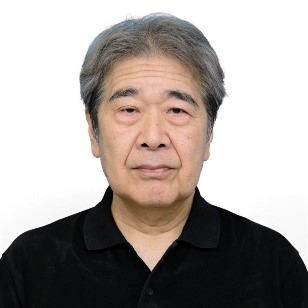Radar Cross Section Analysis of Two Canonical, Parallel-Plate Waveguide Cavities with Material Loading
The analysis of electromagnetic scattering from open-ended waveguide cavities has received much attention recently in connection with the prediction and reduction of the radar cross section (RCS) of a target. This problem serves as a simple model of duct structures such as jet engine intakes of aircrafts and cracks occurring on surfaces of general complicated bodies. In this talk, we shall consider two canonical, parallel-plate waveguide cavities with material loading, and carry out a comparative RCS analysis of these cavities using the Wiener-Hopf technique. The first geometry (referred to as Cavity I) is a cavity formed by a semi-infinite parallel-plate waveguide with an interior planar termination, where three different material layers are coated on the surface of the terminated plate. The second geometry (referred to as Cavity II) is a cavity formed by a finite parallel-plate waveguide with a planar termination at the aperture of the waveguide, where the same material layers as in Cavity I are coated on the surface of the terminated plate at the aperture.
We shall rigorously analyze the plane wave diffraction by Cavity I and by Cavity II separately using the Wiener-Hopf technique. Both E and H polarizations are considered. Introducing the Fourier transform of the scattered field and applying boundary conditions in the transform domain, these two problems are both formulated in terms of the simultaneous Wiener-Hopf equations. The Wiener-Hopf equations are solved exactly via the factorization and decomposition procedure. It should be noted that the solution for Cavity I contains infinite series with unknown coefficients, whereas the solution for Cavity II contains infinite series with unknown coefficients as well as branch-cut integrals with unknown integrands. Applying a rigorous asymptotics with the aid of the edge condition, highly-accurate approximate solutions for Cavity I and Cavity II are obtained. We will show numerical examples of the RCS of the two cavities for various physical parameters, and discuss the far field scattering characteristics in detail.
Date and Time
Location
Hosts
Registration
-
 Add Event to Calendar
Add Event to Calendar
- Room 742, Zhixin Building,
- No. 4800 Cao'an Road
- Shanghai, Shanghai
- China 201800
Speakers
Prof. Kazuya Kobayashi
Kazuya Kobayashi received his B.S., M.S., and Ph.D. degrees, all in electrical engineering, from Waseda University, Tokyo, Japan in 1977, 1979, and 1982, respectively. In 1982, he joined Chuo University, Tokyo, Japan, where he has been Professor Emeritus since April 2025. He held central management positions at Chuo University including, Vice President (2006-2008), Director of International Center (2003-2006), and Secretary to President (2001-2003).
Dr. Kobayashi held Honorary Professor, Visiting Professor, and Visiting Scientist positions at various institutions including: Macquarie University, Sydney, Australia (2014, 2016, 2017, 2019, 2023, 2024, 2025); Karpenko Physico-Mechanical Institute of the National Academy of Sciences of Ukraine, Lviv, Ukraine (2001, 2018); Physical Research Laboratory, Ahmedabad, India (2015); Institute of Radiophysics and Electronics of the National Academy of Sciences of Ukraine, Kharkov, Ukraine (2001); University of Wisconsin-Madison, Madison, Wisconsin, USA (1987-1988). He has been Adjunct Professor at The Electromagnetics Academy at Zhejiang University, Hangzhou, China (since 2004) and Honorary Professor, Amity University, Noida, India (since 2019).
Dr. Kobayashi received a number of distinguished awards including: The President’s Award (2020) from URSI (International Union of Radio Science) for his leadership and untiring efforts in initiating, organizing and establishing AP-RASC as one of the URSI Flagship Meetings; The Governor’s Award (2018) from Toyama Prefectural Government, Japan for outstanding contribution to the promotion of tourism in Toyama Prefecture and raising its international recognition through the holding of large-scale international conferences; JNTO Best International Convention Award (2016, 2018, 2023, 2024) from Japan National Tourism Organization (JNTO), The Government of Japan for outstanding contribution to the invitation of large-scale international congresses to Japan; M. A. Khizhnyak Award (2016) at “16th International Conference on Mathematical Methods in Electromagnetic Theory” (MMET*2016) for contribution to electromagnetic theory.
Dr. Kobayashi is a Fellow of The Electromagnetics Academy, a Fellow of URSI, a Fellow of IEICE (The Institute of Electronics, Information and Communication Engineers). He has also served as MICE Ambassador, JNTO since 2016. He has held various important positions in the international radio science and electromagnetics/optics communities including: Vice-President of URSI (since 2021); Vice-Chair (2014-2017) and Chair (2017-2021) of URSI Commission B; URSI Assistant Secretary-General AP-RASC (since 2015); President (2008-2018) and Vice-President (since 2021) of the Japan National Committee of URSI; Chair of the PIERS Awards Committee, The Electromagnetics Academy (since 2018); Series Editor of the book series “Springer Series in Optical Sciences”, Springer Nature (since 2020); Editor-in-Chief (since 2025) and Editor (2019-2024) of the journal “Radio Science”.
Dr. Kobayashi has contributed significantly to the organization of numerous international conferences including PIERS (Photonics & Electromagnetics Research Symposium) and URSI conferences as General Chair, General Co-Chair, and Chair/Co-Chair of the Technical Program Committee. He is currently involved in organizing the “2025 URSI Asia-Pacific Radio Science Conference” (URSI AP-RASC 2025, Sydney, Australia, August 2025) as General Co-Chair and Scientific Program Coordinator; “2025 Photonics & Electromagnetics Research Symposium” (PIERS 2025, Chiba, Japan, November 2025) as General Chair; “2026 International Conference on Electromagnetics in Advanced Applications and IEEE-APS Topical Conference on Antennas and Propagation in Wireless Communications” (ICEAA-IEEE APWC 2026, Toyama, Japan, September 2026) as Chair of the Local Organizing Committee.
His research interests are in the areas including: analytical regularization methods, Wiener-Hopf techniques, high-frequency and asymptotic methods, electromagnetic theory, canonical problems, scattering and diffraction, radar cross section.
Address:China

